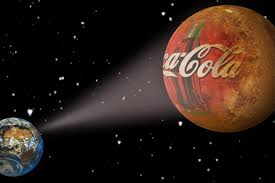Outer Space Advertising Ban
Payton Costenbader
Marketing Editor
It was a historical moment when the first man, Neil Armstrong, stepped foot on the moon in July of 1969. At that time, space travel was revolutionary and a terrifying, foreign concept for mankind. Since then, governments globally have made incredible advances in outer space research, some notable instances include, Russia putting the first Rover on the surface of the moon (1970), Russia growing the first plant on another celestial body (1982), and India’s discovery of lunar water (2008). Present day, we are threatening the beauty and calmness of the night sky by floating the idea of advertising in outer space.
For decades in the United States obtrusive space advertising has been banned and is defined, by law, as advertising in outer space that is capable of being recognized by a human being on the surface of the Earth without the aid of a telescope or other technological device. (51 U.S code 50911). This law was enacted in 1993 in response to Space Marketing INC.’s proposal to send a billboard into space. This month the concept was touched upon again at 245th Meeting of the American Astronomical Society when John Barentine of Dark Sky Consulting suggested that this ban should be enforced globally, rather than just in the U.S alone. This type of digital marketing is threatening humanity’s natural connection with the night sky. Astronomers and other outer space focused professionals are boldly proclaiming their adversity to this idea. They argue that advertisements in space will interfere with the research of the night sky, as the light pollution will affect the efforts of scientist’s ground-based telescopes. This fear is common and is the greatest argument against the advertising efforts.

At this time, there are no definitive plans of Outer space advertisement campaigns, however Russian companies such as Advant Space, have begun testing the idea. The company’s “Constellations” project is designed to use satellites to project laser images onto the night sky to create digital billboards. These advertisements would potentially run for 10 minutes before moving to the next city. Behind this plan is a stroke of genius as this campaign will have the ability to reach billions of people and influence city populations around the globe. The effect of this campaign may not be well received and could have an opposite effect on a company’s brand image depending upon the public’s attitude toward the new aspect of global marketing. Astronomers are concerned that this plan will ruin the connection between man and outer space and ruin the appeal of lunar beauty.
Contact Payton at costenpa@shu.edu

